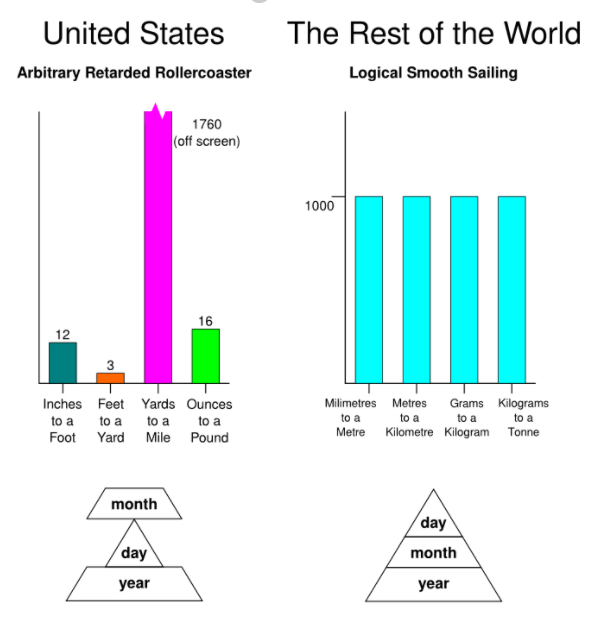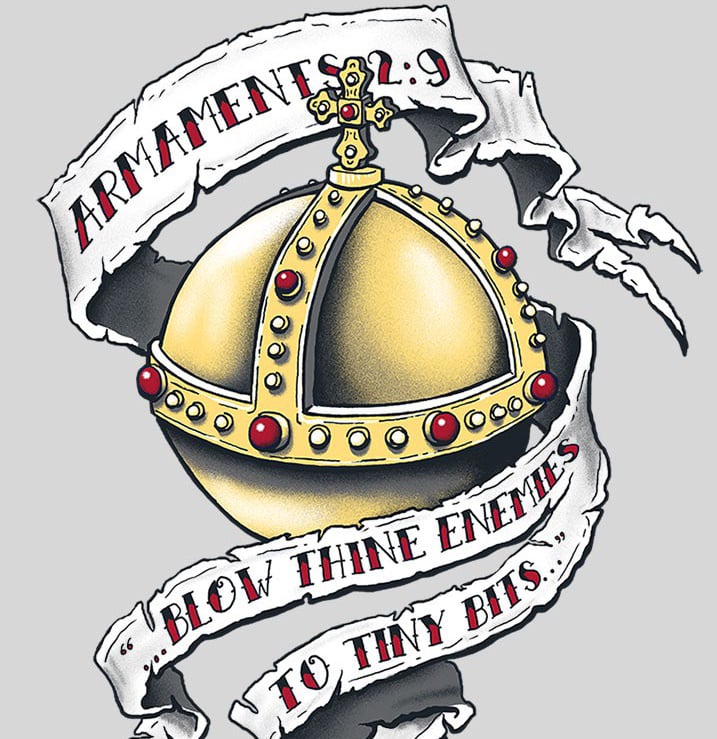100C° is not death, it is Finnish sauna temp. Really, Sauna competitions start with 110C°. Famously in 2010 one Russian competitor died, and the Finn who won had to be sent to ER.
Edit: didn’t know that they actually haven’t held any competitions after that.
Sauna competitions
I appreciate how you just dropped this casually like of course everyone knows about Sauna competitions.
Haha, sure, but there isn’t much to know.
Sauna competition is that they go inside hot sauna and last one who comes out wins. They increase the temperature and throw water to the sauna stones. That humidity makes the temperature feel quite a lot harder (air is quite good insulator, which is why you don’t boil).
In the competition quite often people got first degree burn injuries, which is quite crazy.
I think it means dead as in trying to live in a 100° environment. Kind of like the survival rule of 3s, where you can survive 3 weeks without food, 3 days without water, 3 hours in an extreme environment, and 3 minutes without air.
I guess it could say “unsustainable” instead of dead, but that’s less snappy.
Three scientists arguing over the definition of zero
Celsius says “zero is the freezing point of water”
Fahrenheit says “no, zero is the freezing point of ammonium chloride”
Kelvin says “hold my beer”
Is that true about fahrenheit? I’ve never heard that before.
If I remember correctly, it’s not the freezing point. Fahrenheit used a brine that included ammonium chloride to set 0 on his scale since it was the closest thing he could make in his lab that was a consistent temperature. The other end was body temperature, which he set at 96 if I’m remembering right since it’s more easily divisible than 100. He was a little off on his body temperature measurements so it’s considered a little higher than that now.
It’s more chaotic than that.
He started with the Romer scale (brine freezes at zero, water 7.5, boils at 60, body temperature 22.5), which he tweaked to not need fractions for plain water freezing and body temperature by fudging some numbers and multiplying by four.
This made water freeze at 30 and human body temperature 90. He recalibrated it so that it was 32 and 96 so that there were 64 degrees between them, so he could draw the markings by dividing the interval between them in half six times.
He then saw that water boiled at about 212 on this scale, so he tweaked it again so that water froze at 32 and boiled at 212, since they’re 180 degrees apart, which is desirable because it puts them on opposite sides of a temperature gauge.
Because of these tweaks, the original brine temperature is now about 4F, and body temperature is 98.6.
The tweaks make sense if you know that Fahrenheit was making and selling temperature gauges, so taking the Romer scale and marking every quarter degree gets you the first Fahrenheit scale.
Then he tweaked it to make it easier to produce, and then again to fit in the dial better.So he fudged the science so the product would be easier/cheaper to make? Why does this feel like such a common story?
Because it wasn’t science. :) keep in mind it was before there was a notion that a temperature scale was part of science, it was part of a tool.
“My thermometer is easier to read and the scale is more likely to line up with what you want to measure”.It’s kinda like how a CD having 700mb of storage is a product of engineering choices and compatibility with older tape/record formats that usually had less than 80 minutes of audio, and not some fundamental measurement about the world.
The science he did was in making methods of consistently measuring temperature, not the numbers he assigned to those temperatures.
Kelvin: Zero is the freezing point of the universe
I read somewhere that F is the scale of how hot/cold people are, C is the scale of how hot/cold water is, and K is the scale of how hot/cold particles are.
Celsius.
And the other one is spelled wrong too I believe, though that one doesn’t really matter.
Really cold water, really hot water 😎
Ah, more FCK jokes.
Oh for FCK’s sake…
Zero is freezing
10 is not
20 is pleasing
30 is hot
40 frying
50 dying
I have this theory that Americans suck at math because they insist on sticking with the imperial measurement system and so nothing makes mathematical sense - Americans intuitively just think in every day units qualitatively. Whereas the rest of the world uses metric, so base 10 math just comes naturally.
Source: I am a US STEM professor. Our students suck at math.
When I was 16, I went to high school in California for half a year as an exchange student. I am from Germany and as a junior, I would have had something like my 4th or 5th year of chemistry in school, but out of necessity (or laziness) I took beginner’s chemistry.
For exercises I had been paired with two girls who used to try to make fun of me (I think; I never really figured out what their deal was), and asked me stupid questions about myself or Germany. I remember they once asked laughingly whether I like oranges because I was wearing a t-shirt with an orange print.
Well, then one day, there we go. Converting exercises. You have students from 9th to 12th grade in groups of 3-4, trying to convert imperial measurements to metrics. And then metrics to metrics. Basically, for a couple of weeks, we just converted stuff like 14 cm to mm or dm. I forgot so much about my time abroad but the most vivid memory I have is of the girls looking at each other (after a couple of days and repeated explanations) and one says “the decimal system just makes no sense” and the other one quietly and slowly nods in agreement. I ask them how it makes no sense. “Well it just makes no sense.” It’s just base 10 everything and the rest is practice, it’s not different from inches to feet. “No but you see this makes sense. There are 12 inches in a foot”, continued by a list of how many shmekels make up a whoopsiedoodle and how many dingelings fit into a hybotron.
I understand how you first have to get accustomed to new units and how conversion might need practice when you aren’t familiar with the prefixes, especially when you aren’t too experienced in the stem field. But I am still flabbergasted by the statement that having a system where everything is just base 10 and then you shift the decimal point around makes no sense. We are talking about fellow juniors here. How do you make it to age 16/17 never having heard of a decimal point or having trouble with base 10 conversion? HOW CAN YOU SAY IT MAKES NO SENSE?! It’s the simplest, most logic based system there is!
IMO metric also allows you to reason about things in your head more easily because doing base-10 calculations in your head is doable.
For example, “Each 1m section of a pipeline contains 20L of oil. The goal is to empty a 200 km section of pipe into trucks. If each truck can handle 20 tonnes of oil, how many trucks would be needed?” In metric that calculation is 20 * 1000 * 200 = 4 million L. 20 tonnes is approx 20,000 L since 1L of water is 1kg, so it’s going to be at least within an order of magnitude of that for oil. 4M / 20k = 200.
With US customary units it would be "Each 1 foot section of a pipeline contains 1.5 gallons of oil. The goal is to empty a 100 mile section of pipe into trucks. If each can handle 20 tons of oil, how many trucks will be needed? To handle that calculation you’ll have to convert feet to miles. Gallons to pounds, pounds to tons, etc. You can do it on paper, but all those weird conversions add massively to the difficulty.
There’s a reason why the American science community has long converted to metric. You just can’t do calculations like this quickly enough.
well how dense is the oil
Not as dense as those teenagers
ok how about this america abopts the metric system but every moves on to base 12.
Fifth grade prepared me for base whatever, bring it on
Non-integer base, anyone?
2i is also fun
I have a theory that Americans are great at math because they regularly work with base-12 systems.
And base 3 sometimes (yards). When taught well, there’s a ton of value in learning to quantify the world in a variety of base systems.
Not uniquely American, but thinking in base 7 (weeks), base 12 (years, hours, feet), base 60 (minutes), base 3 (yards), base 10 (the default unless told otherwise), etc. really helps you adapt and estimate a number of other, unrelated, things.
That would be cool if true. But then they use measures like subdivisions of an inch in base 8 increments.
It’s closer to a binary system, since it’s iterative division by two. Half inch, quarter, eighth, sixteenth and so on.
People do the same thing in metric, but they just prefer to write 0.125 cm instead of 1/8 cm.
Imperial units are a bit more heavy on rational numbers instead of decimal.
The base 12 stuff comes up with things that were historically cut in halves as well as thirds.
It’s all highly composite numbers, since they’re easier to work with if you’re doing repeated division in your head. Ten is only divisible by 2 and 5 before you start to get a lot of rapidly growing decimal parts. 12 is divisible by 2,3,4,6.
If you’ve got a balance, a knife and a stone we all agree on the weight of (let’s call it a pound stone), it’s easy to measure our a half or third of a pound, and halves or thirds of any other portion I can produce.
Over time, common divisions got names and a system of units was produced that was entirely inconsistent but liked 12 and 60 because of ease of use, and powers of two because you can just keep cutting them in half.It’s all moot since we can use a scale now instead of a balance with a rock, and we can trust measuring tapes instead of repeatedly bisecting a plank, but it at least gives context to why it prefers fractions and numbers like 12 and 8.
My professor for my first real engineering class had an excellent quote, “A good engineer can work in any unit system.”
There’s actually quite a lot of advantages the US could have in math education if we properly harnessed both unit systems. Becoming fluent in both and regularly doing conversions would give students a lot of real world application and simple math practice.
A good software developer can also work with any language, but if you’re going to use Javascript to build an enterprise level software you are guaranteed to have a bad time.
You use what is best for the job and from my understanding there’s really no benefit to using imperial measures over SI, beyond the familiarity of growing up with them. If you were taught SI units from the very start you wouldn’t ever use imperial.
I really like your attention to detail here. Fahrenheit and Celsius both have degree symbols, but Kelvin doesn’t – just as it should be.
This is why I’m Fahrenheit gang all the way. I’m not running lab experiments daily, but I am going outside all the time. If you have to express the temperature with decimal precision for everyday use, you’ve lost.
Edit: It’s hilarious how easily you can piss people off by saying Fahrenheit is subjectively better as a human temperature scale. Too much of your identity is wrapped up in being able to talk temperature in multiples of ten, people. Chill out. Maybe something near 42 degrees. Sorry, meant to say 5.6 degrees for the nerds in here.
What? No one’s using C to that precision outside the lab. It just depends on what you grew up with man. I know below 0 I need a winter jacket, ~10C chilly, ~20C is shorts weather, ~30C is hot, >40C is death. Perfectly practical everyday estimations.
For me the only advantage of F is you can say it’s 69F out and bake things at 420F.
I agree with most of that, but I have been in Phoenix, AZ in ~42°C. Sure it wasn’t pleasant, but I’m not dead.
Edit: For extended periods, absolutely. For AC building hopping, survivable.
That is a slight exaggeration, but I know here in Australia if you went out in 42C with no sun protection then yeah, you’re not having a good time and it is a risk to life.
In July 2023 in Phoenix on the 20th and 25th it was 119° F or 48.3° C. Not as much an exaggeration as I would like it to be.
It’s regularly 79° F to 107° F or 26° C to 41° C in Phoenix in summer. Lately it’s been hotter (past 5 years)
At those temperatures, dry or wet, it’s still gonna be dangerous.
Not trying to argue here, but the fact those were both last year should be enough of an indication to our political “leaders” that climate change is a major threat.
Source: Extreme temps from weather.gov

When I’m reading through dates, January gives me a hell of a lot more information than “the fifteenth”
Then use ISO and start with the year, which gives you even more information.
Not necessarily. I work outdoors, the month gives extremely important seasonal context. “A July” tells more than “1985”… although realistically I need both for any conceivable purpose.
Also, to be honest, reading dates is not a difficult process. It takes less than a second regardless of whether it starts with a month, a day, or a year. It’s not worth to use that as the basis of discussion. Imo, having the numbers be logically sorted from biggest to smallest unit (or reverse) is worth it just to avoid the confusion.
Yall just jealous that a mile is longer than a kilometer.
It’s the opposite. I’ve lived in both modern, and backward countries.
When you’re driving somewhere and you see “50” to your destination, it’s infinitely preferable for that to be Km rather than miles. Makes every journey shorter
50 to your destination vs 80
I think I’d rather take 50 actually
I’d rather drive 130 km/h than 80 mph…
The superior measure is Hectare/Damselfoot.
Which mile are you talking about?
Chinese mile is only half a kilometer, but the others are all longer indeed. The international mile is still quite short in comparison to other miles.
If we’re just going to call the Li a Chinese mile then a French Mile is exactly a kilometre.
Someone posted here once something like
Farienhiet is how humans feel. Celsius is how water feels. Kelvin is how atoms feel.
I kinda like that.
It only makes sense if you grow up with Fahrenheit. Otherwise Fahrenheit isn’t how humans feels since most of us have no concept what these number mean.
If I would just go with 0 - cold 100 - hot I would assume 50 - perfect. But 50 is still chilly. 70-80 feels like it should be getting hot but that’s the most comfortable temperature.
Honestly it makes more sense with Celsius. -40 is really cold. +40 is really hot
Again. 0 is still freezing. But in the relative scale it’s not so bad














